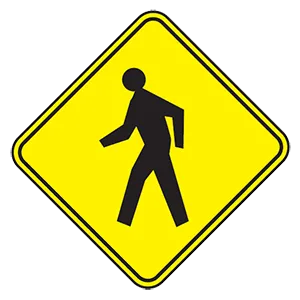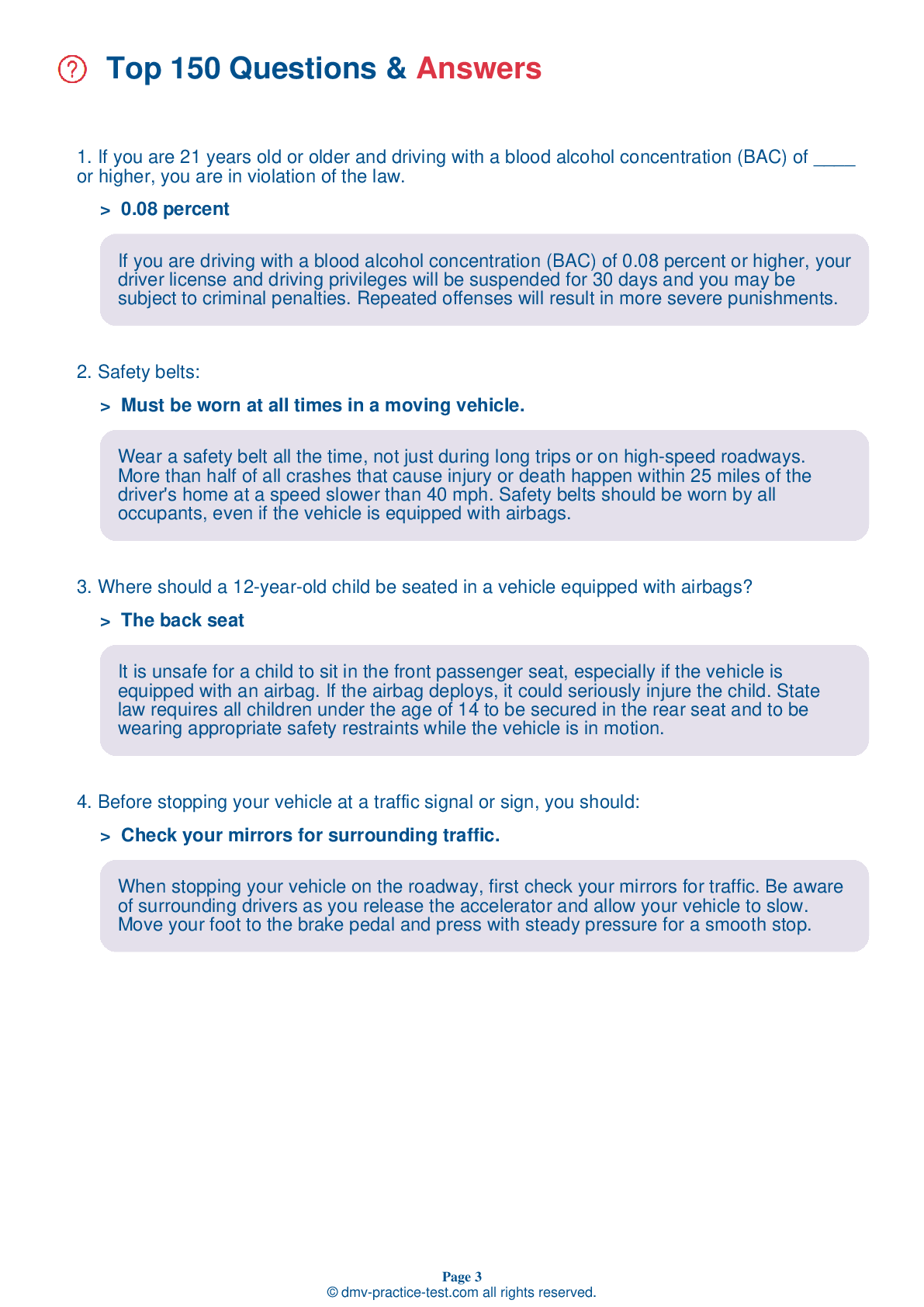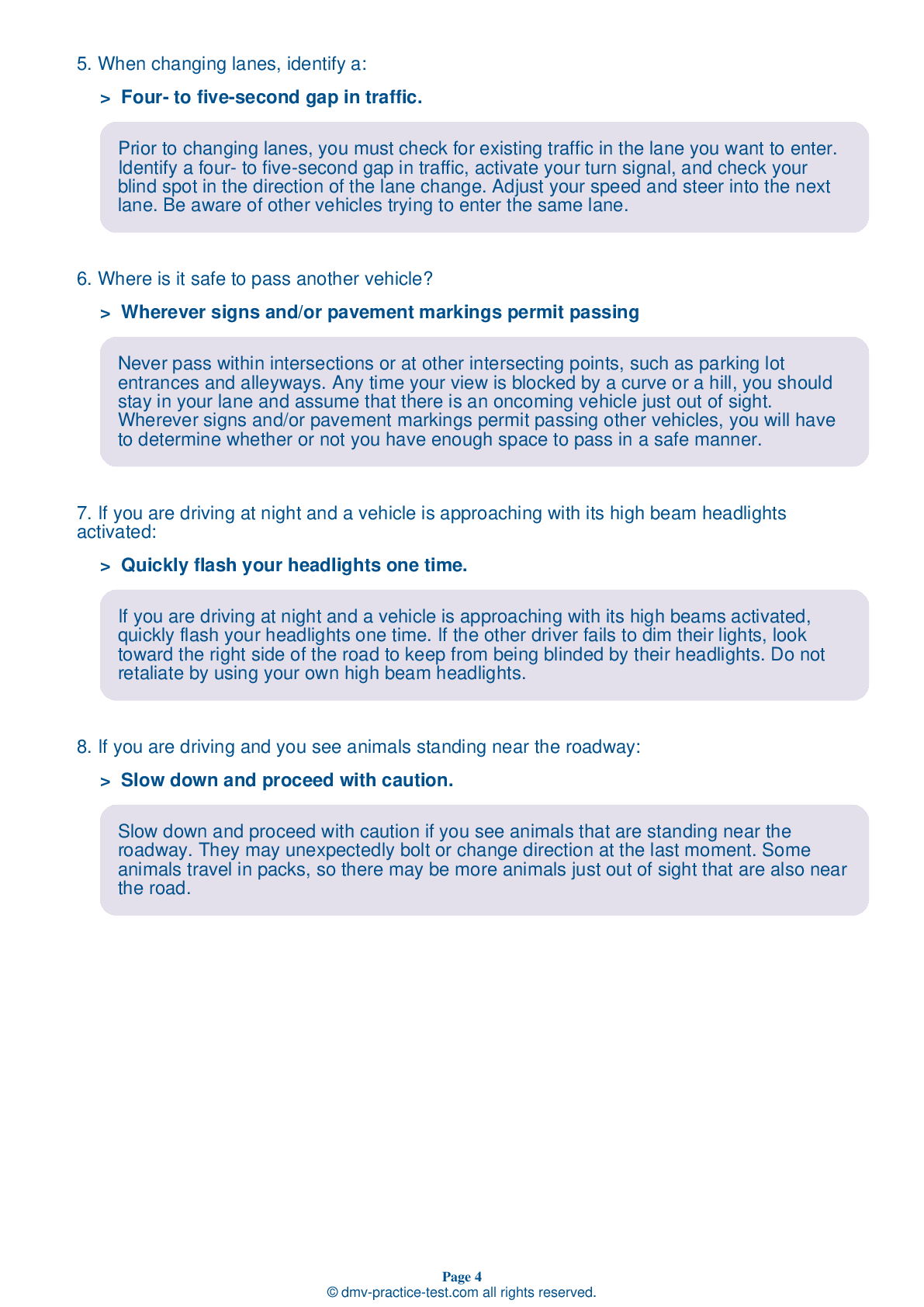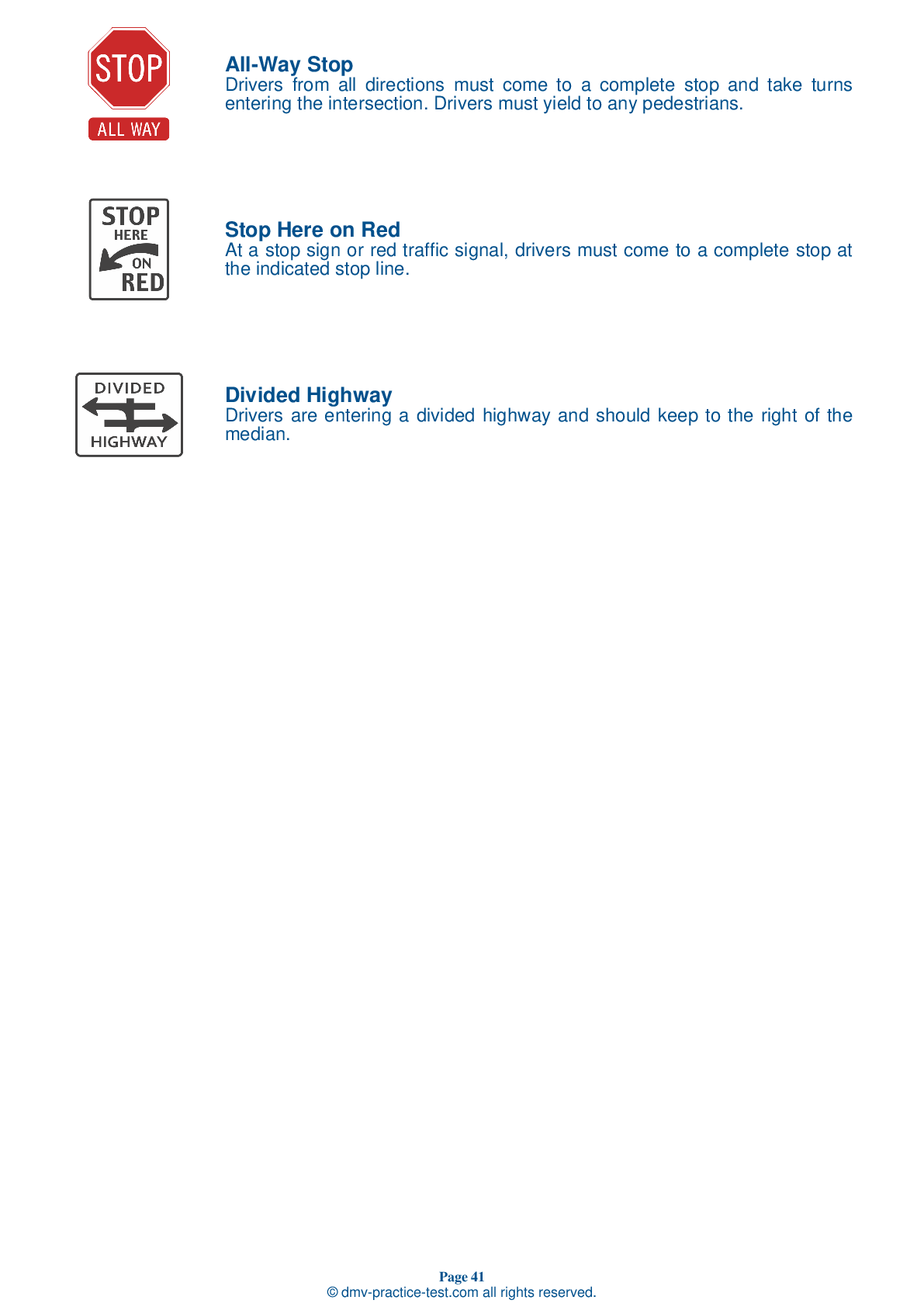FREE Kansas DMV Practice Test #12 Page 2 of 3
In Kansas, the DMV practise tests have been revised for January 2025. It includes questions based on the Kansas Driver Handbook's most essential traffic signals and regulations for 2025. Use actual questions that are very similar (often identical!) to the DMV driving permit test and driver's licence exam to study for the DMV driving permit test and driver's licence exam.
On the practise exam, each question gets a tip and explanation to help you remember the concepts. The written component of the official Kansas DMV test will include questions about traffic rules, traffic signs, and driving statutes, as well as information from the Driver Handbook.
To obtain a passing grade, you must correctly answer 20 of the 25 questions. Take our DMV practise exam to help you prepare for your Kansas instruction permit or driver's licence.
The DMV exam is available in several languages.
Using any kind of testing assistance will result in an automatic fail, and the DMV may take additional action against your driver's licence, so stay away from it.
9 . If you parallel park facing downward on a hill:
When parking downhill, turn your front wheels toward the curb or edge of the road. When parking uphill on a road without a curb, turn your wheels toward the edge of the road. When parking uphill on a road with a curb, you must turn your front wheels away from the curb.
10 . This sign means:

This sign marks the presence of a crosswalk. Be alert to any pedestrians that may be crossing the roadway.
11 . At dawn or dusk and in rain or snow, it can be hard to see and be seen. A good way to let other drivers know you are there is to turn:
You must use your headlights at any time when conditions prevent you from seeing other vehicles and when it may be difficult for other drivers to see you. Always use your low beam headlights if weather conditions require you to use your windshield wipers.
12 . Which of the following road surfaces freezes first?
Pavement on bridges and overpasses can become icy even when other surrounding pavement is dry. Bridges often freeze before, and thaw out after, the rest of a road.
13 . When a school bus is picking up or dropping off children, you must:
When approaching a school bus that is picking up or dropping off passengers, you must come to a complete stop before reaching the bus, regardless of your direction of travel.
14 . You should not start across an intersection if you know you will block the intersection when the light turns red:
Even if the signal is green, you must not enter an intersection unless you can get completely across before the light turns red. If you block the intersection, you can be cited.
15 . A solid yellow line on your side of the centerline means:
Solid yellow lines on two-lane roads indicate zones where passing is prohibited. If a solid yellow line appears next to a broken yellow line, drivers in the lane nearest to the solid yellow line may not pass. In some instances, both yellow lines will be solid, indicating that it is not safe to pass from either direction.
16 . You may pass a vehicle when:
A single broken line indicates that drivers may cross from either lane to change lanes. Dashed yellow lines alongside solid yellow lines indicate that passing is permitted from the lane next to the broken line, but not from the lane next to the solid line. Only change lanes when it is safe to do so.
Need Car Insurance? No problem!
Compare the best rates in Kansas and find a personalized policy that meets your needs.
1. Are You Currently insured ?
2. Married ?
3. Do you own your Home?
4. Do you have more than 1 car ?
5. Have you or a Family Member Honorably Served in U.S. Military ?
6. Your Name
7. Age
8. Zip code
IMPORTANT REMINDER:Auto Insurance is Mandatory to drive in Kansas. Get covered before you hit the road to avoid any fines.
Ranked by best match



